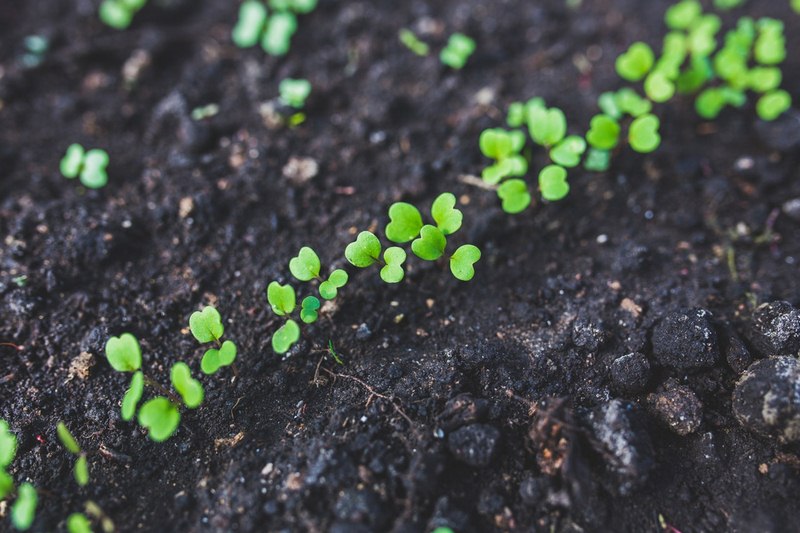Is there anything better than waking up in the morning, moving towards your own garden, plucking a fresh tomato, and making a nice salad for breakfast? It doesn’t get much tastier than that.
Still, any gardener will tell you that garden vegetables are fickle little things and that everything, from the amount of water needed, to the choice of vegetation, mulch, soil composition… Many things can go wrong and ruin your “crops”.

In this article, we will focus mainly on water and the factors that influence how much water you should use, and how to use it.
Now, water seems simple, doesn’t it? You just turn on your hose and get at it during the dry season, and let the rain do most of the work the rest of the year. Nothing could be further from the truth.
Watering too much is a real issue, something many green (see what we did there?) gardeners forget about.
If your garden is bigger than a general home garden, you can have a garden seat with wheels that can help you to visit and recheck everything. So you can seat, work and move at a time.
Read Also:
First, we have soil. An old rule of thumb went something like one inch of water per week is enough.
This is not true, because this erroneous notion took into account the fact that one inch of water is needed to get through to the roots of your vegetables.
The problem here is soil. Clay-based soils, for example, hold much more water than regular soil types. This can lead to an overwatering of the vegetables, giving you poor results.
You should cultivate your garden regularly.
The reason you should do this for your soil is that you aerate the upper layers of the soil, saving the water from getting wicked up to the surface, and actually improve the retention and capture of rainfall.
Anything from hand tools to a rototiller will work, as long as you are diligent. Try not to disturb the roots. Fluff up the first two inches of soil, and never till deeper than 5 inches.
A common mistake with cultivation people make is that they stop in midsummer.
While the crops have been established enough to prevent or minimize the appearance of weeds, midsummer is also the hottest time in the year.
This means that there is a very high chance of water evaporating and leaving the soil.
Furthermore, if you live in an area where there is a lot of heavy rainfall in the summer, a cultivated garden will capture water much better.
The soil will absorb it properly, instead of just letting it gather into pools and puddles on the surface.
It’s best you do this either 3 days after a good storm, or, better yet, moments before a storm actually hits.
Try not to come into contact with the soil (i.e. stay off of it) in order to avoid compaction.
The best part about mulch is the fact that it absorbs water. If you live in an area with very little rainfall, mulch is a godsend.
Mulch helps with avoiding the loss of moisture that comes about to the surface, and it helps with keeping the soil cooler.
Cultivation should be done early in the season so that you can keep the soil wet and oxygenated.
For fruiting crops, you should apply mulch when the blossoms drop. For vining crops, you should do so the moment you see the vegetables set their runners.
Now, there are some vegetables that need a lot more water than other ones. For example, cauliflower and broccoli are excellent examples.
Both plants need a lot of direct sunlight and well-drained soil. However, they also need to be watered regularly. The same goes for cabbage.
Asparagus needs a balanced fertilizer application, mostly because it takes 3 years to grow. You may notice a pattern here. Watery, juicy vegetables require a lot of water and care.
Now, the best time to water them? After rainfall. This may sound strange, but the reason is quite obvious.
Sometimes, the water simply doesn’t penetrate deeply into the soil. This is because there simply isn’t enough. Half an inch of rainfall is not enough, you need penetration of 5 to 6 inches.
You can get all the equipment you like, the best hoes, rakes, retractable hose reels, water systems, sprinklers… If you don’t have enough water, the plants will die.
Properly watering your water-hungry vegetables is vital. Always water close to the roots, and try not to wet the foliage too much.
This wastes water and can provoke diseases. A light spray is quite enough for the rest of the plant.
Furthermore, don’t water during the hottest part of the day, no matter how logical that may seem. Most of the water will simply evaporate.
Even if you think the soil seems dry on the surface, you should dig down. The ground can actually be quite moist, and so there won’t be any need to water it further.
Your wonderful dream garden won’t be so dreamy once everything wilts and dries up. You need to take care and to learn how to water properly.
Many rules of thumb simply aren’t true, and there are many variables for every garden. Things like soil composition, the time of day when you water your veggies, the amount of water needed…
Don’t buckle under the pressure and wastewater and time on plants that seem they won’t take. Think about what you’re planting, and take care of the plants accordingly.
Liam Smith is a young and aspiring Australian blogger with a passion for everything related to home, design and lifestyle. He has a B.Sc. in Interior design and is an avid reader.